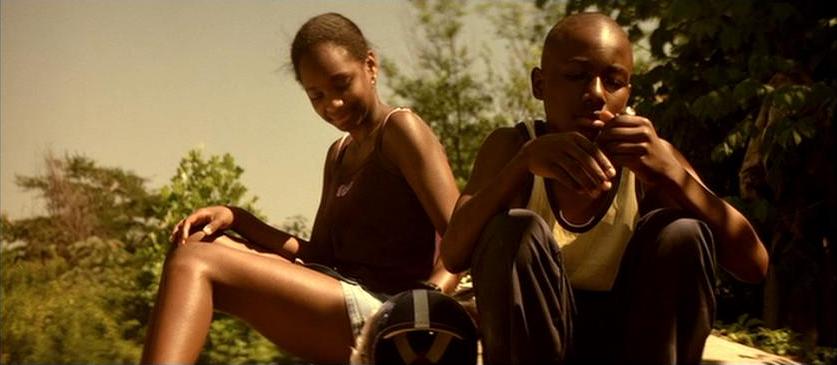Picked Flick #97: George Washington
 Perhaps the film's supreme accomplishment is one of its simplest: the faith and good sense that have directed Green and his collaborators to film characters, scenes, relationships, and locations that simply never arise in American films, even, for the most part, movies as off the beaten path as this one. The commencing scene, in which the emotionally precocious 12-year-old Nasia breaks up with her 13-year-old, bespectacled boyfriend Buddy (Curtis Cotton III) is both jarring and heartwarming in its lack of irony. Beyond the fact that George Washington affords such generous time and space to pre-teen emotions, and beyond the extreme rarity of seeing African-American characters of any age depicted so warmly and lit so well in an American movie, the film really hits its stride when the young characters start criss-crossing with their elders, when the white kids and black kids reveal cliques and alliances that are just as mundane to them as they are surprising within our gentrified and color-lined national cinema. The only attributes that George Washington's characters share in common are the rural, weedy county they inhabit and their unenviable class position, which seems to account for why workplaces and domestic spaces blur into each other so imperceptibly, and why everyone seems to know each other so well (kids and adults, even relative strangers, all address each other easily by first name).
Perhaps the film's supreme accomplishment is one of its simplest: the faith and good sense that have directed Green and his collaborators to film characters, scenes, relationships, and locations that simply never arise in American films, even, for the most part, movies as off the beaten path as this one. The commencing scene, in which the emotionally precocious 12-year-old Nasia breaks up with her 13-year-old, bespectacled boyfriend Buddy (Curtis Cotton III) is both jarring and heartwarming in its lack of irony. Beyond the fact that George Washington affords such generous time and space to pre-teen emotions, and beyond the extreme rarity of seeing African-American characters of any age depicted so warmly and lit so well in an American movie, the film really hits its stride when the young characters start criss-crossing with their elders, when the white kids and black kids reveal cliques and alliances that are just as mundane to them as they are surprising within our gentrified and color-lined national cinema. The only attributes that George Washington's characters share in common are the rural, weedy county they inhabit and their unenviable class position, which seems to account for why workplaces and domestic spaces blur into each other so imperceptibly, and why everyone seems to know each other so well (kids and adults, even relative strangers, all address each other easily by first name).If it weren't so melancholy in tone and incident—the latter is Green's real stumbling block as a writer—George Washington would feel like a sort of Fanfare for the Common Kid, utterly non-judgmental in its embrace of unremarkable youngsters and shrewd in the way it highlights their various drab environments as, at least in their minds, emotionally specific spaces. So what if George Richardson, the central character, still ends the movie as a sort of symbol without a referent, and if the kids' conspiratorial, paralyzed response to an accidental death is less confidently handled than the same plotline is in Lynne Ramsay's Ratcatcher. George Washington never quite achieves what Nasia, its narrator, promises—the prospect of seeing all the way into the characters' hearts and skeletons. Still, very much to its credit, the film's idiosyncratic surface already feels more revealing than the excavated cores of many other films, and it does train its audiences to see new people, to watch and listen in a new way. (Click here for the full list of Nick's Picked Flicks.)
Labels: Favorites, Movies 2000-04

















0 Comments:
Post a Comment
<< Home